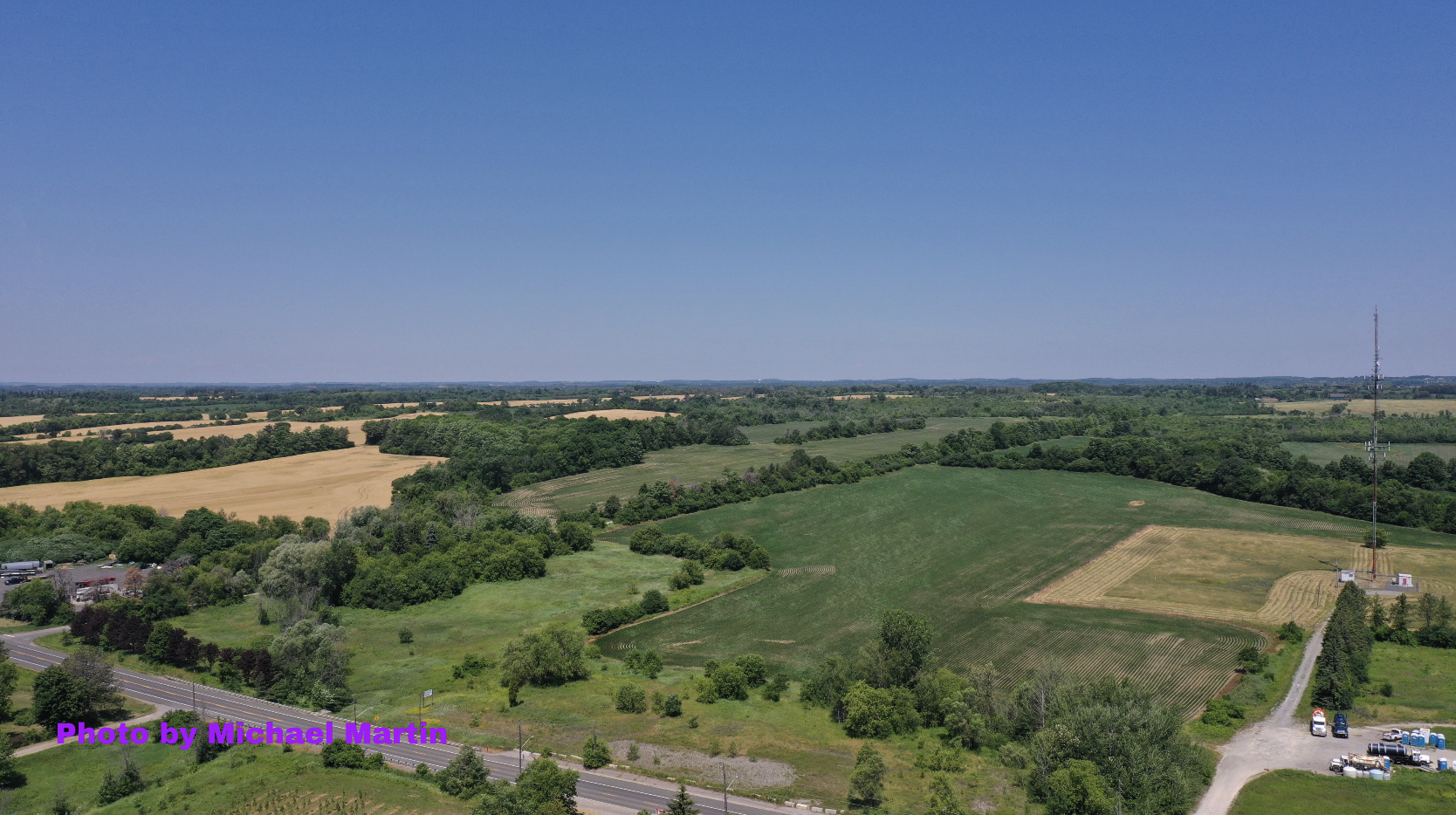
By Mark Brooks
In response to a Freedom of Information request, we have received the list of leaseholders for the Pickering lands retained for economic development, including an airport. A big thank you and shout–out to Transport Canada for doing what they could on this politically–charged topic. Although heavily redacted, the response provides enough information to enable a look forward at the challenges in breaking ground on the new airport in 2026 as suggested in the KPMG ASA report.
The detailed information provided in the response to our FOI (Freedom of Information) request includes expected, surprising, and feared information.
The number of leases listed in the FOI release differs slightly from the information posted on the Transport Canada website. Their website shows 284 total leases, 64 Residential, 172 Agriculture, and 48 Commercial or “other” leases. The FOI lease list identifies:
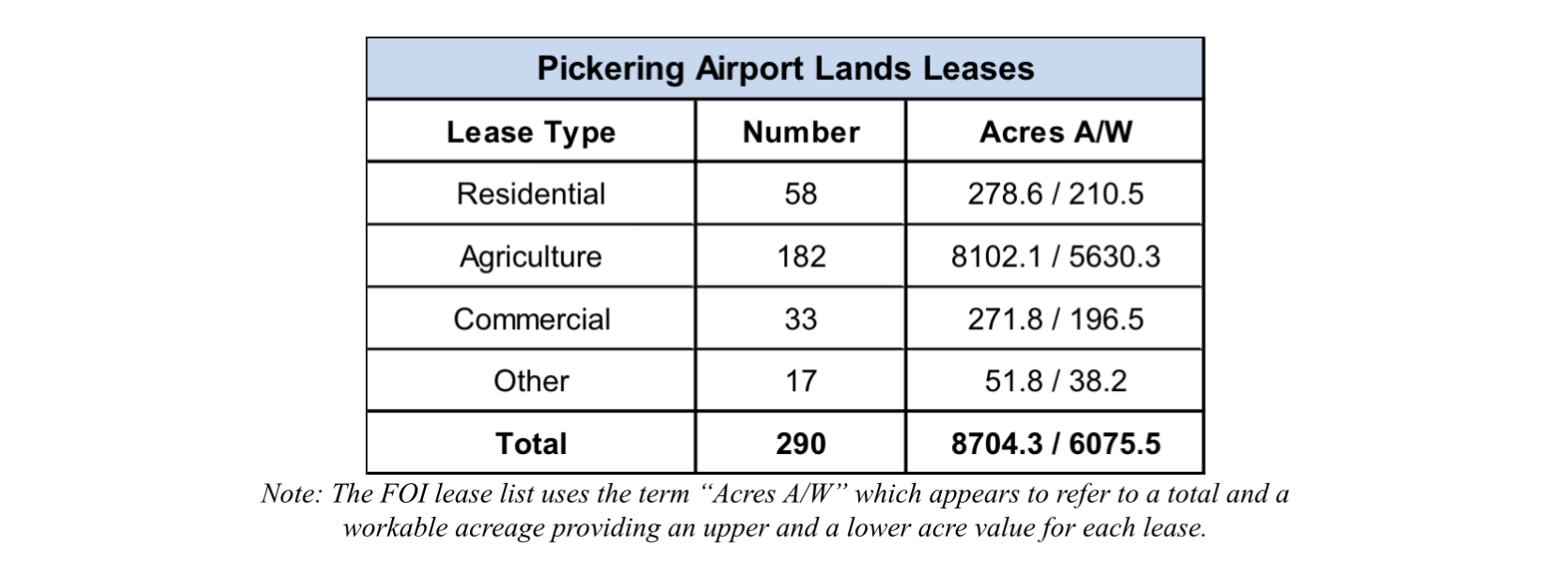 The Expected:
The Expected:
- A handful of large commercial farms are leasing the majority of the land. The major leaseholders are Tapscott, Reesor/Burkholder, Stouffville Farms, L&J Farms, and 1018105 Ontario Inc. (believed to be Hunter Farms). The Big Five hold 110 leases (38% total leases), controlling 4,475 acres, or 55% of all lands leased.
- The number of commercial businesses leasing part of the Pickering lands is holding steady, as Transport Canada (which manages the land) is keeping the pressure of creeping commercialization in check.
- Current commercial operations range from trucking and construction storage to a port–a–potty company. Social clubs, including a golf club, a motorcycle racing club, and a paint ball business have a presence.
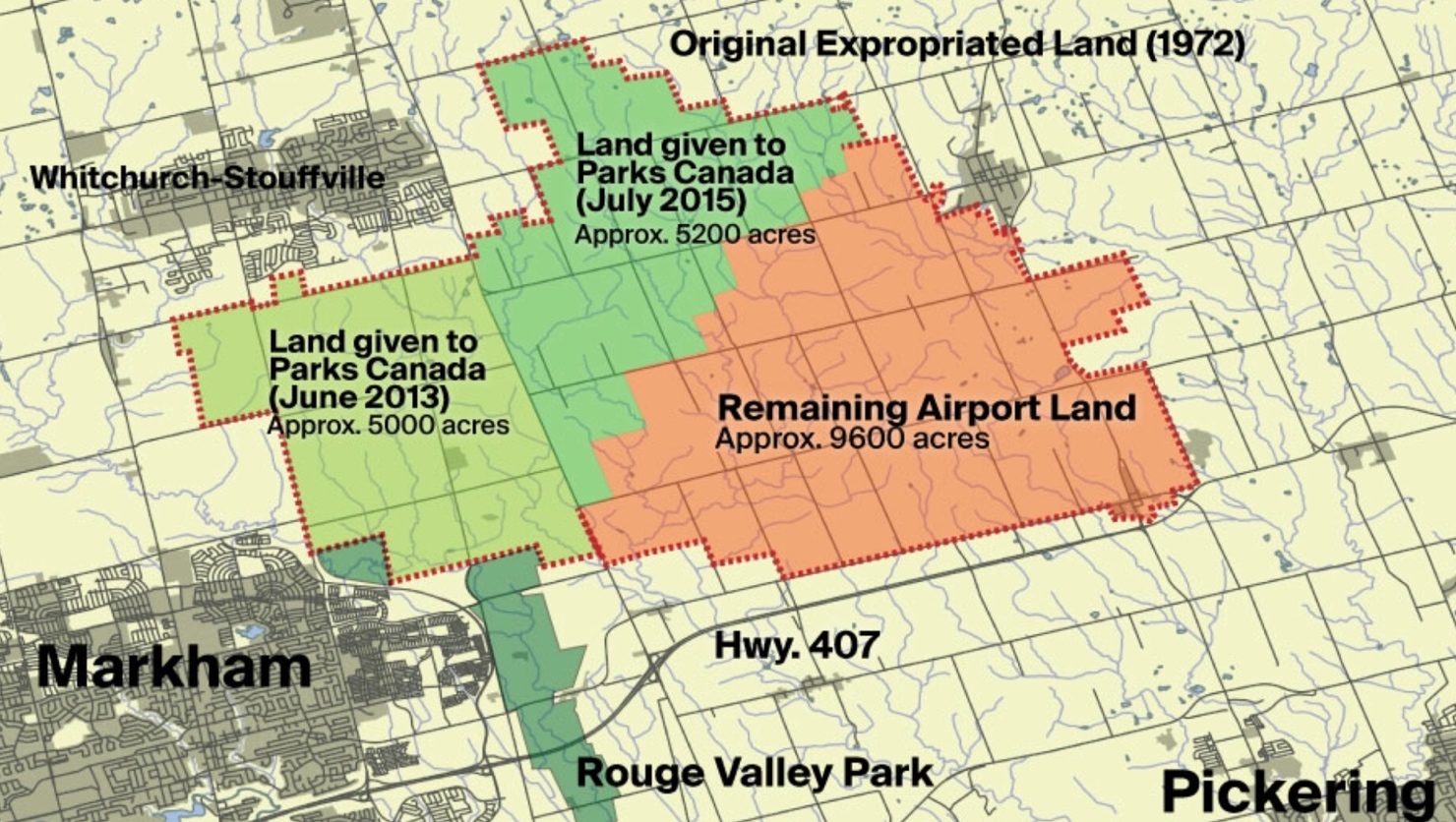
The Surprises:
- Contrary to public comments by some anti-airport folks, there is no waiting list of eager farmers. The federal FOI contact confirmed this.
- Not all of the lands are leased. A handful of acres are sitting without an active lease.
- The total yearly income figure from all leases is unexpectedly low at approximately $2 million. This is the total rent from all commercial and residential buildings as well as agricultural leases. We expected a figure well north of $2 million with each category (residential, commercial, and agricultural) raising roughly 1/3 each of the total.
- All individual lease values are redacted. This makes it impossible to track if the new goal of $120 per acre on renewed agricultural leases (up from $40 an acre in 2018) is being achieved. Similarly, it is hard to determine how far below market value the residential and commercial rates are. Side notes on some of the leases point to some unusual arrangements such as $0 rent for the first two years on one of the leases.
The Feared:
- One third of the leaseholder names are redacted. While it was expected that the names for some of the residential leases would be redacted, having 1/3 of all leaseholders, including commercial and agricultural leaseholder names withheld, is a surprise.
- The redacted names hold 105 leases (36% of the total) controlling 2,945 acres, or 35% of the total lands leased. This includes 32% of the agricultural land.
- Of the redacted leaseholders’ leases, 51 (8 residential, 43 agricultural) are 10 acres or larger and 19 of those leaseholders’ control 2,245 acres or 83% of the redacted lands. This reinforces the fear that insiders could be profiting from taxpayer resources.
- Having a significant portion of the lease list redacted means it can’t be determined if many of these leases are controlled by single individuals or entities.
Unfortunately, the new information released on the Pickering land leases has not provided enough transparency to put to rest the fear that insiders could be profiting from cheap leases. As the identities of the lease holders of 35% of the lands are redacted, it is impossible to known what relationships, if any, they might have with elected officials. But it is a good start.
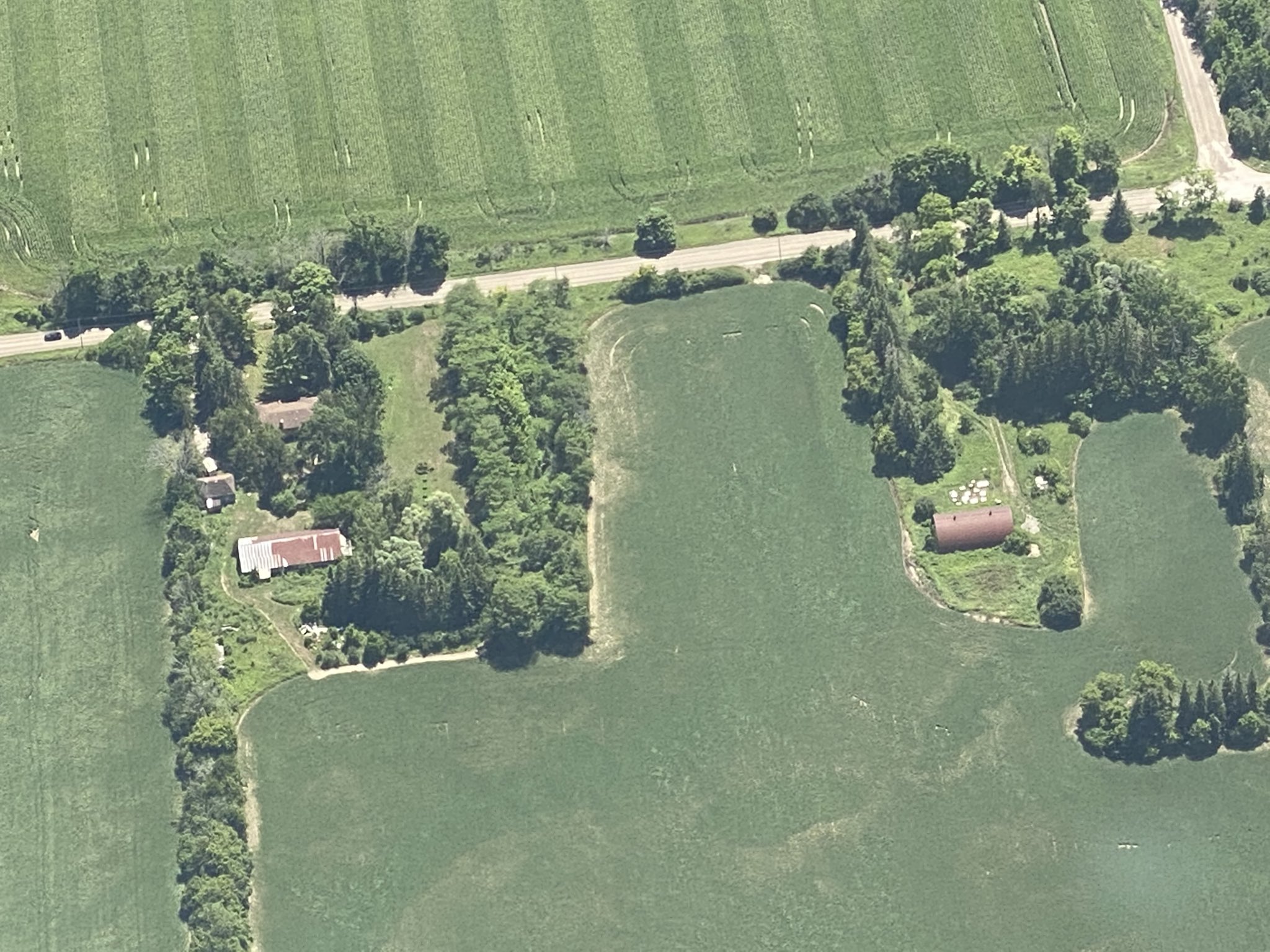
An examination of the land from the air over the last several months has shown issues that may require time and money to cleanup. This includes several potentially unsound buildings, isolated piles of rusting and discarded industrial or farming equipment, and a few scattered small piles of what could be garbage. At least one of the Big Five ( L & J Farms) has been previously fined for a fertilizer spill. How much notice will be needed to enable the leaseholders to complete a cleanup and leave in good order? Could this pose a barrier to development of the airport and associated employment zone? What does this mean for the part of the land expected to remain on lease as a green space and agricultural buffer around the airport. Who is on the hook for the cleanup?
It is nearly impossible to relate this new information to the “organic” agricultural paradise being promoted by a local member of parliament, the current leaseholders, and the anti–airport lobbyists they support. We need to know more about those leases where the leaseholder name has been redacted and a better breakdown of lease values.
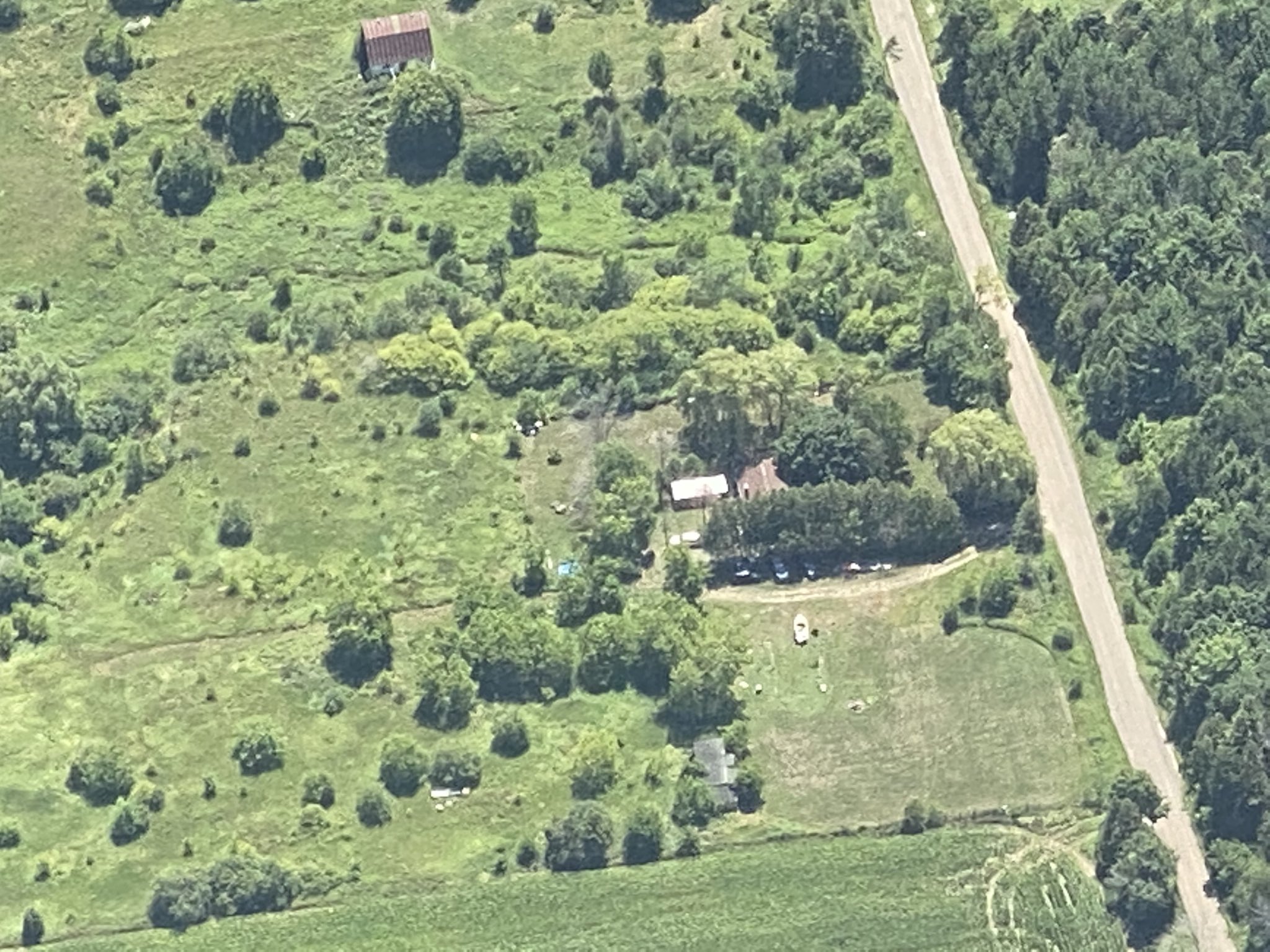
On the positive side, we now have a clearer picture of how this multi–billion–dollar government land asset is currently being utilized. We have a better idea of the challenges ahead as this land is reorganized into an economic engine and transportation hub expected to employ tens of thousands, serve millions, and generate billions in economic activity.
It is time for a plan for which leases need to be wrapped up, and which land needs to be cleaned up. Much needs to be done in preparation for construction to begin on phase one of the new airport in 2026. Stay tuned for more to come, as we process the pages of information provided.
References:
Transport Canada Pickering Lands Website:
2026!……Wanna bet. Can. gov. is going broke…u r in la la land. Defense commitments are through the roof.
Suspect board of Trade is reconsidering OR La,la land for them too.
Pickering airport plan …lost and gone forever.
Check out what the Dutch have been doing in agriculture. They feed Europe. We need that ..US can no longer be counted on.
Greenbank is for you…ha ha. Ur about to have a whole lot of competition.
From Dun and Bradstreet –
1018105 Ontario Inc
Hunter Farms
5360 Thickson Rd N
Whitby, ON, L1M 1W8 Canada
(519) 758-0662
http://www.pecfarms.ca